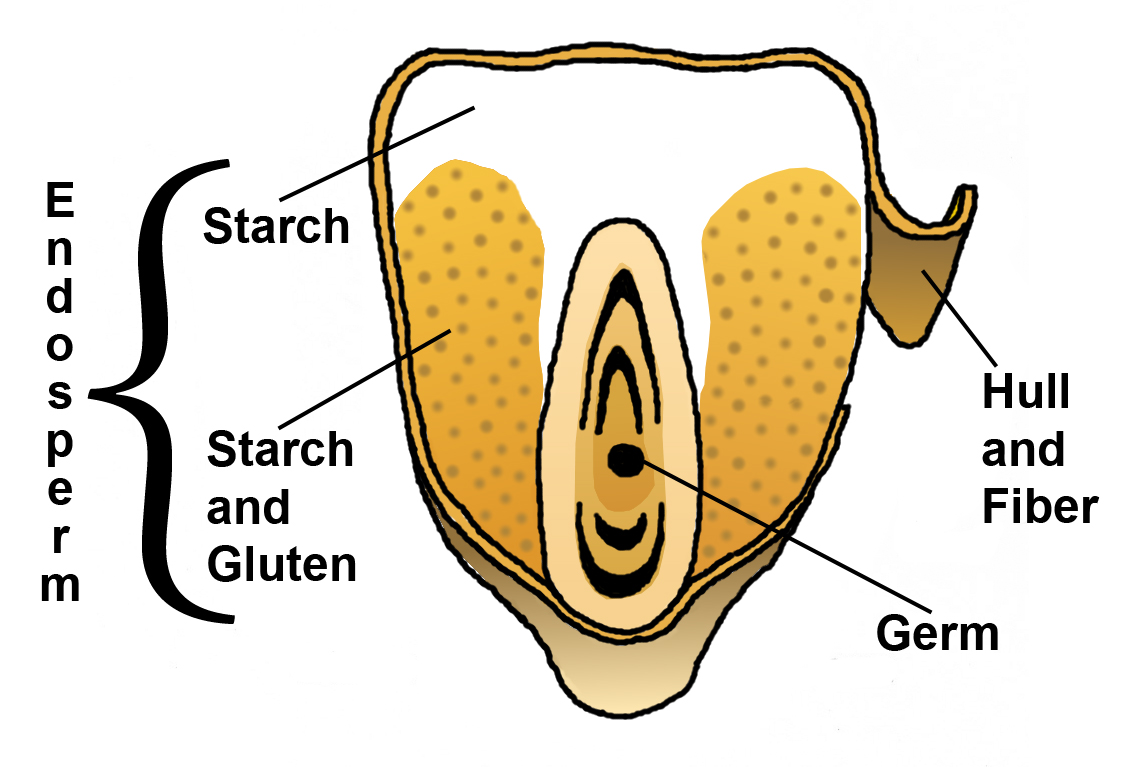I was waiting for a question like this to come up. I am never disappointed.
Before we talk about why we poop out corn lets talk a little about seeds and the human digestive system.
An individual kernel of corn is a seed. Each ear of corn has many many seeds on it. Here is a diagram of a single corn kernel.
 |
| From http://www.corn.org |
There are several stages of digestion. The first is mastication or chewing. When it comes to corn this is a very important step. Chewing breaks open the individual kernels and exposes the starch and gluten which we can digest. If the kernel is not chewed and swallowed whole then the hull will be mostly unaffected by our digestive system the rest of the way through.
The reason our digestive enzymes and the stomach acids don't breakdown the improperly chewed (or swallowed whole) kernels of corn is that the hulls are cellulose. We, humans, don't have a digestive system that can break down cellulose so the corn kernel passes through the digestive system.
Having whole kernels of corn in your poop means that you did not spend enough time chewing your corn before swallowing it. The unchewed kernels are expelled in the feces (poop) with the hulls still intacted.
One side note..... there is an advantage to the plant for humans and other animals to poop out their seeds whole. Most seeds have a cellulose hull or coat that allow them to pass through the digestive system of most non-ruminant animals unless they are chewed. What this does is mix those seeds in the feces. If we imagine back before toilets or outhouses humans were doing their bathroom duty in fields or behind trees like the rest of the animals. The human or other animal would ingest a seed and then when they would go to the bathroom the seeds would be embedded in the feces. The feces provides nutrients (instant fertilizer) and water. An added bonus is that most animals will not dig in feces to acquire those seeds so the passing of the seed also offers a measure of protection to the seed from being eaten by something that will chew it better or can digest it.